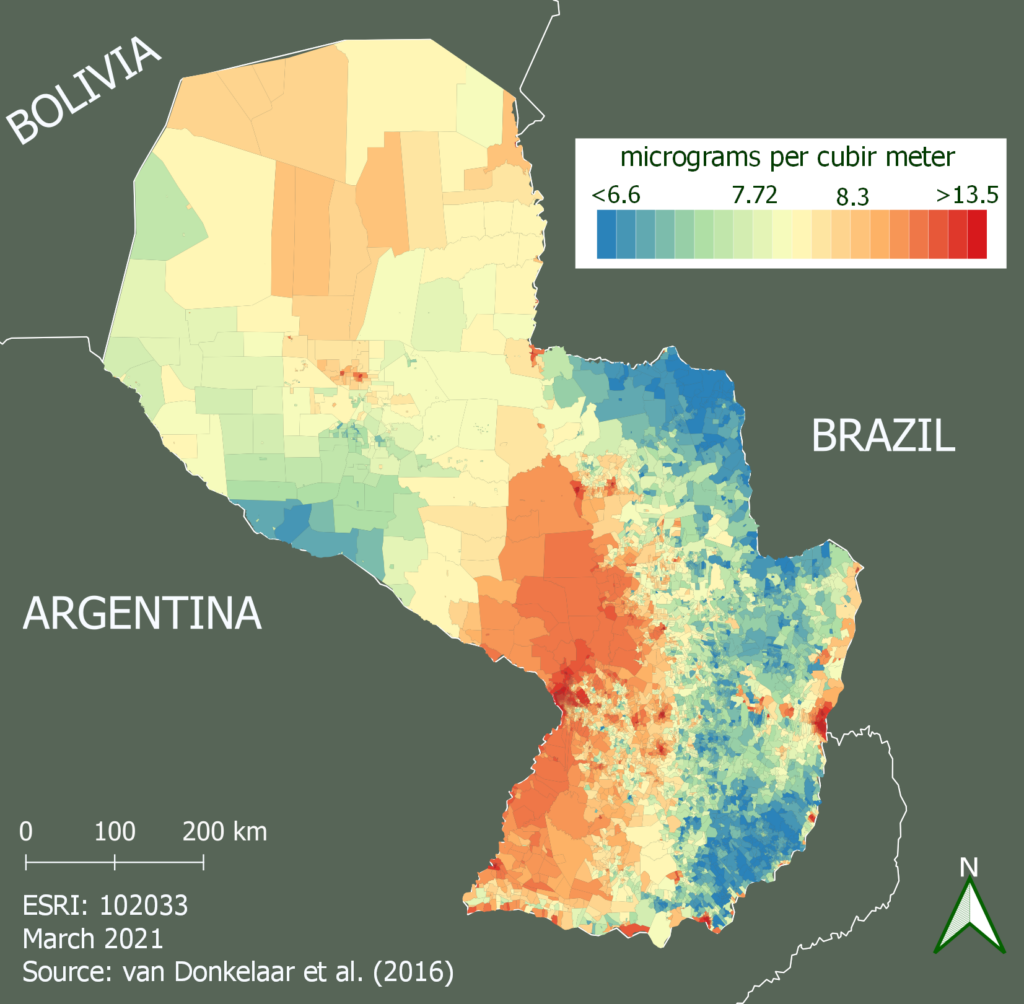SDG Policy Initiative’s work in Paraguay
The SDGPI has been working closely with the Paraguayan government to evaluate their subnational progress towards the SDGs and design policy initiatives to fill the gaps
Mario Rodriguez-Heredia
The Agenda 2030 imposes unique challenges to each nation that demand policy solutions on multiple fronts. Setting the best initiatives to fill the gaps between the current situation and the SDGs is a data-intensive task. Government agencies require large amounts of information to diagnose the status of each goal. Simultaneously, there are multiple dimensions associated with each goal. For instance, education has many aspects to be evaluated, such as coverage or quality. At the same time, there is a significant geographic component since education progress is often spatially heterogeneous. Understanding regional-specific needs and disparities within a country is central for adequate diagnostics and policy designs.
Over the past months, the SDG Policy Initiative (SDGPI) has been working with Paraguay’s Ministry of Finance and the Sustainable Development Solution Network (SDSN) to identify the country’s challenges towards meeting the SDGs. In the first stage, the SDSN undertook an international comparison with its Latin American neighbors. The results show that Paraguay scores lower than the regional average. Education (SDG4) and health (SDG3) are among the areas that demand the closest attention. In contrast, the country has achieved significant poverty reduction progress as the proportion of the population living below $1.90 per day fell from ten percent to less than two percent over the last two decades.
Although an international assessment provides information to detect priority areas, we need more geographically disaggregated data to assess subnational challenges. In the second stage of the project, we are working with different government agencies to build subnational indicators to estimate SDG progress for each of the country’s departments—i.e., the Paraguayan equivalent of States in the US. For instance, the National Institute of Statistics (INE) is responsible for the most relevant national surveys and censuses and has been a key partner for the project. Using INE’s estimations of departmental poverty (these employ national poverty lines instead of the $1.90/day threshold), we can see that while almost one out of ten individuals in Asuncion’s metropolitan area is poor, the share rises to more than forty percent in other areas.
In different cases, data is not centralized since different government agencies collect data according to their administrative mandates. This means that we must consult directly with the leading agency on each topic to request their estimates or available data. For instance, the National Institute of Forestry (INFONA) provided us with indicators from their forestry inventory. These inputs are relevant to assess deforestation and to point out the affected areas —e.g., the Atlantic forest in the eastern side of the country faces significant threats.
Also, the Ministry of Health provides us with mortality anonymized microdata. This has allowed us to assess relevant health dimensions. For example, we estimated the protein-energy malnutrition and diarrhea deaths that could be related to unsafe water, sanitation, and hygiene. Although the country’s simple mortality rate is 5.4 per 100,000 inhabitants, the standard deviation between departments is 4.1, indicating significant variation across the country.
Official data is in some cases unavailable to build some SDG indicators. One tool to bridge this is geographic information. For example, although some prior studies of air quality have been conducted in its capital city, Paraguay does not have air quality monitoring systems to estimate fine particulate matter levels. Using satellite-based estimates created by prior research, we calculate nation-wide estimates for particulate matter with a diameter equal to or smaller than 2.5 micrometers per cubic meter (PM2.5). The map below displays the geographical distribution of PM2.5 by zip code. Although these estimates do not substitute for direct measurements, this alternative approach allows for an initial assessment.

Currently, we are still gathering regional information to show the specific profiles of every department. In the next stage, the team will identify the best policy solutions based on evidence and best practices. We will focus on filling the significant gaps to achieve the SDGs; tailoring the proposal to departmental specifics. For example, it may be necessary to set policies to prevent deforestation in the Atlantic forest, while air quality policies are required in the largest metropolitan areas. We will also recommend a plan to finance the necessary investments.
The SDG index at the national level provides crucial information. However, policymaking requires specifics, and geographically disaggregated indicators are key in this regard. The government’s statistical capacity is a determinant for subnational evaluations. In many instances, increasing data collection capacities may represent benefits for the government since it allows for more targeted policies, contributing to cost-effectiveness.

